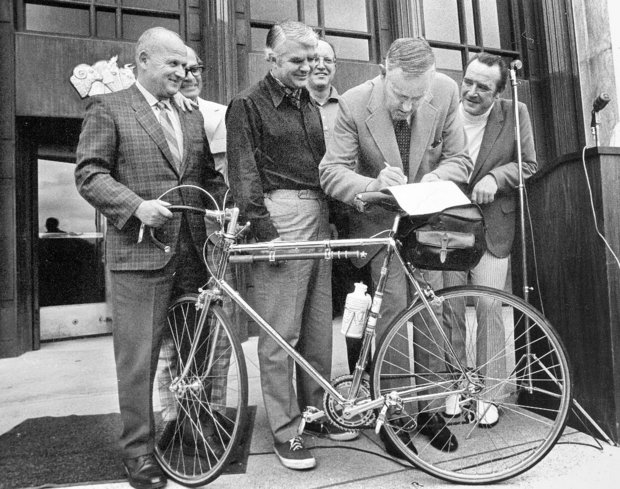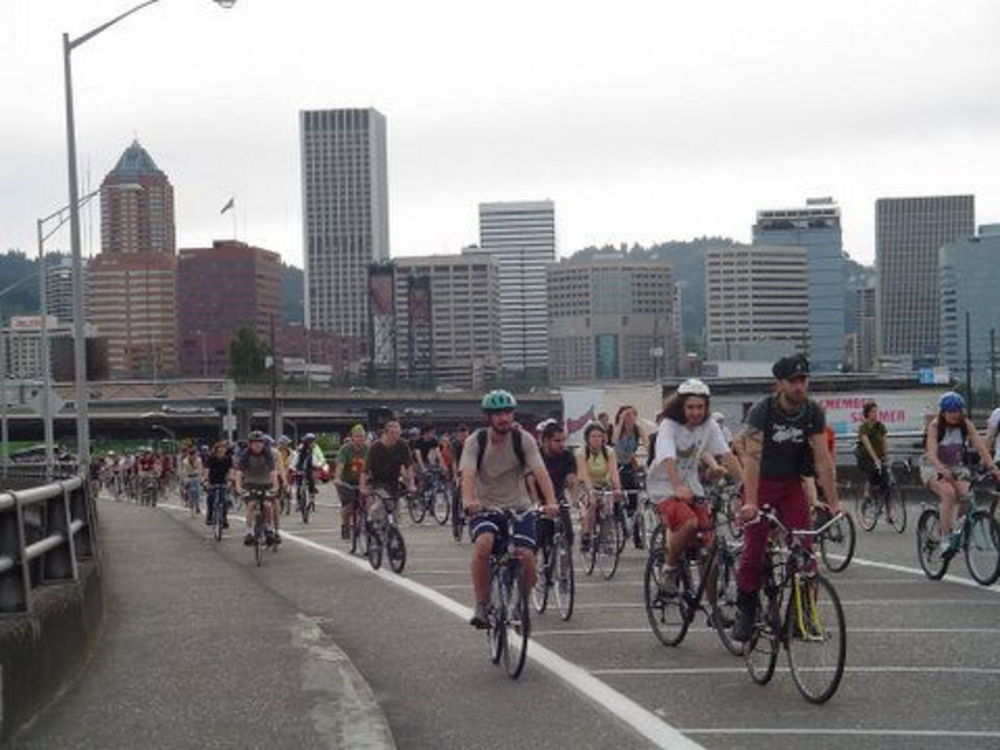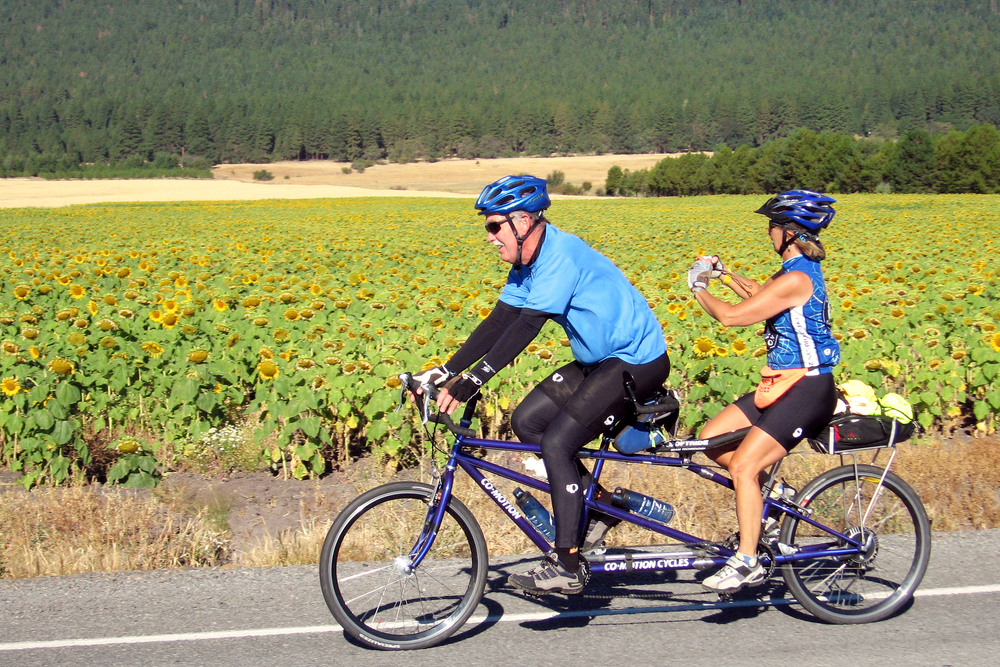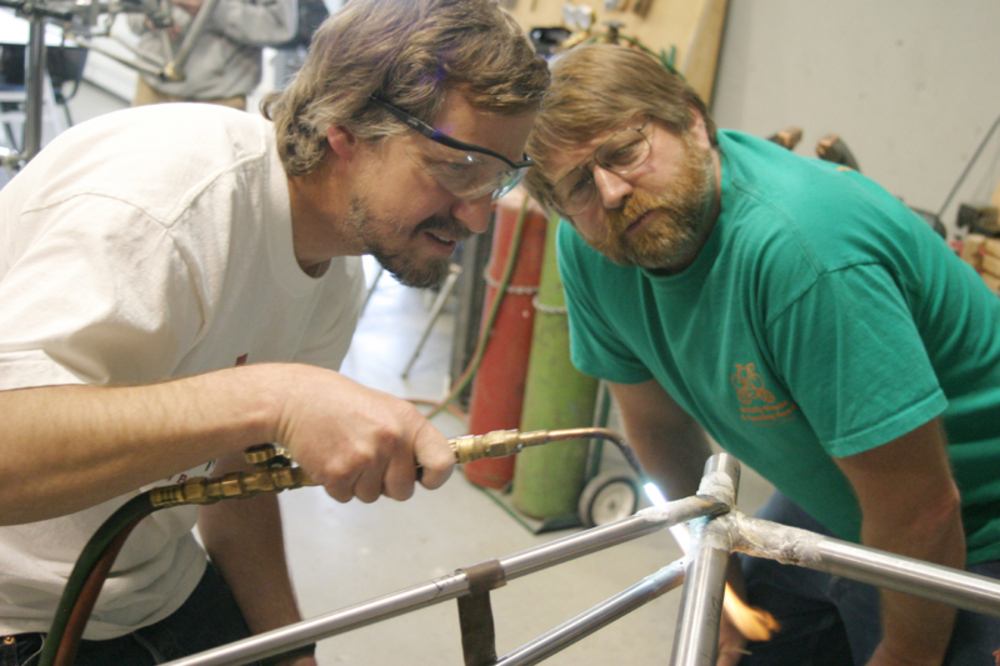On June 11, 1971, Governor Tom McCall, with his usual flair for publicity, stood on the steps of the Oregon Capitol to sign a bill on the seat of a ten-speed bicycle. McCall and Don Stathos, the chief sponsor in the Oregon House of what was known simply as the Bicycle Bill, praised the legislation for seeking to make the roads friendly for cyclists.
The Bicycle Bill required the State of Oregon to accommodate bicycling and walking on all new road projects and transportation agencies to spend at least one percent of the state highway fund to accomplish that goal. The first of its kind in the United States, the Bicycle Bill foreshadowed the national Complete Streets movement that began to take hold three decades later to encourage the adoption of policies aimed at providing safe access to the streets for all users.
The Bicycle Bill helped spur the construction of bicycle and pedestrian paths, sidewalks, and bicycle lanes throughout Oregon, although it never had the sweeping impact sought by many cycling advocates. While there have been periodic efforts in the legislature to repeal it, the bill gained new strength after a 1993 lawsuit by the Bicycle Transportation Alliance against the City of Portland led to an Oregon Court of Appeals decision upholding the intent of the law. Local and state officials were put on notice that they could be sued if they failed to provide pedestrian and bicycle access on new and rebuilt roads and bridges.
Stathos, a Republican insurance agency owner from Jacksonville, explained that he had the idea for the Bicycle Bill when he and his daughter were run off the road while riding a tandem to Medford. "My kids and I would go out and ride, and we'd have to go into the gravel because of cars passing,” Stathos said in 1979, at the dedication of the Donald L. Stathos Bikeway between Medford and Jacksonville. "It occurred to me that here we are, the richest country in the world, and it's almost impossible to go anywhere except in your car."
Stathos initially encountered heavy resistance from both legislators and Governor McCall. But he gradually won them over as he amended his bill to include pedestrian access and to provide specific exemptions, such as projects in which bicycle and walking access was unsafe or the cost was “excessively disproportionate to the need or probable use.”
Sam Oakland, a Portland State University professor and pioneering bike activist, organized cyclists to lobby for the bill. It became lore in the cycling community and frequently repeated in media accounts that the bill passed by just one vote at each stage. Actually, it passed the House on a 36-21 vote and the Senate 19-11. At the time, America was in the midst of the so-called Bike Boom, a sudden resurgence in bicycle sales and interest among adults that led many to see cycling as a viable form of transportation for short trips.
While the Bike Boom faded by the late 1970s, Oregon eventually became an enduring leader in bicycle transportation. Portland, Eugene, and Corvallis developed nationally recognized bicycling networks, and Portland for many years has had the highest share of bicycling commuters of any large U.S. city, according to annual census surveys.
Stathos served for many years on the Oregon Bicycle and Pedestrian Advisory Committee and was unwavering in his cycling advocacy until his death in 2005. The law he authored helped prod state and local transportation agencies to consider bicycle and pedestrian access when planning road and bridge projects. Decades later, transportation reform advocates pointed to Oregon's experience when arguing that roads should accommodate all users, whether using private vehicles, transit, bikes, or their own feet.
-
![]()
McCall signs the Bicycle Bill, 1971. Don Stathos is left of McCall.
Photo property of the Stathos family
Related Entries
-
![Critical Mass in Portland]()
Critical Mass in Portland
Critical Mass is a monthly event that asserts bicyclists' right to ride…
-
Cycle Oregon
In 1987, Jim Beaver, an Ashland innkeeper, imagined a long-distance bic…
-
![Portland Bridge Pedal]()
Portland Bridge Pedal
Bridge Pedal is an annual bicycle event in Portland, Oregon, that offer…
-
![Thomas William Lawson McCall (1913-1983)]()
Thomas William Lawson McCall (1913-1983)
Tom McCall, more than any leader of his era, shaped the identity of mod…
-
![United Bicycle Institute]()
United Bicycle Institute
Ashland's United Bicycle Institute (UBI) is the largest trainer of cert…
Map This on the Oregon History WayFinder
The Oregon History Wayfinder is an interactive map that identifies significant places, people, and events in Oregon history.
Further Reading
Miller, Bill. ”Take a ride on a special bikeway.” Medford Mail Tribune, April 27, 2008.
Oregon House and Senate Journal, 1971.
Mapes, Jeff. Pedaling Revolution: How Cyclists are Changing American Cities. Corvallis: Oregon State University Press, 2009.
Mahar, Ted. “Suit planned over lack of bike lanes.” The Oregonian, April 14, 1993.






